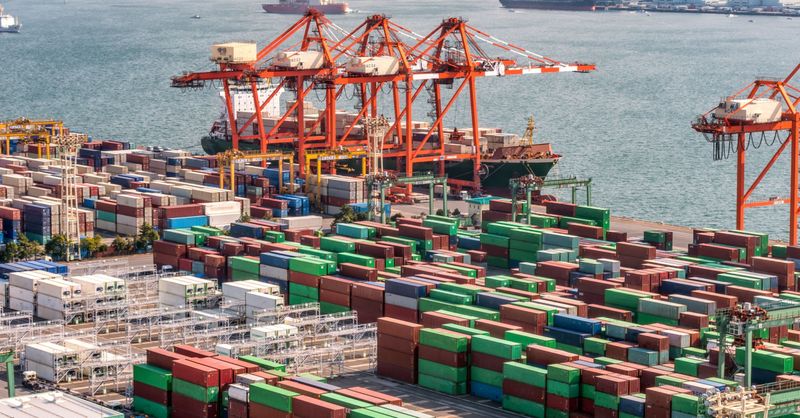In the dynamic world of logistics, understanding future trends is crucial for staying ahead of the curve. This is particularly true in container drayage, where the movement of shipping containers over short distances plays a pivotal role in global trade networks. As we look ahead, several key trends are poised to reshape the landscape of container drayage, influencing everything from operational efficiency to environmental sustainability and technological advancements.
Importance of Understanding Future Trends
Anticipating future trends in container drayage is essential for businesses to adapt and thrive in a rapidly evolving industry. By identifying upcoming changes, companies can proactively adjust their strategies, invest in the right technologies, and capitalize on emerging opportunities. Moreover, staying ahead of regulatory developments and customer expectations ensures that companies not only survive but lead in an increasingly competitive market.
Key Trends
1. Sustainability
In recent years, there has been a growing emphasis on sustainability within the logistics industry as a whole, and container drayage is no exception. Environmental concerns, regulatory pressures, and customer demand for eco-friendly practices are driving the adoption of sustainable initiatives.
a. Electric and Hybrid Vehicles: One of the most significant trends is the shift towards electric and hybrid vehicles in drayage operations. These vehicles offer reduced emissions compared to traditional diesel engines, contributing to cleaner air quality and lower carbon footprints.
b. Alternative Fuels: Beyond electric and hybrid vehicles, there is also experimentation with alternative fuels such as hydrogen and biofuels. These options promise further reductions in greenhouse gas emissions and dependency on fossil fuels.
c. Last-Mile Innovations: Innovations in last-mile delivery, including micro-hubs and optimized route planning, are reducing congestion and emissions associated with drayage operations in urban areas.
2. Automation
As explained in our guide on how automation improves container drayage processes, automation is revolutionizing the logistics sector, including container drayage, by improving efficiency, reliability, and safety.
a. Autonomous Vehicles: The development of autonomous trucks and drones for container movement holds promise for reducing labor costs and enhancing operational efficiency. These innovations are being tested and gradually integrated into drayage operations, illustrating how technology is changing truck drivers’ lives and improving shipping costs.
b. IoT and Telematics: The Internet of Things (IoT) and telematics solutions are enabling real-time tracking of containers, predictive maintenance of vehicles, and optimization of fleet management processes.
c. Robotics and AI: Robotics and artificial intelligence are streamlining container handling processes at ports and intermodal terminals, reducing turnaround times and operational costs.
3. Globalization
Globalization continues to shape container drayage trends, driven by expanding international trade volumes and shifts in global supply chains.
a. Trade Agreements and Regulations: Changes in trade agreements and regulatory frameworks impact drayage operations, influencing routes, tariffs, compliance requirements, and highlighting why supply chain cyber security matters for protecting these processes.
b. Port Infrastructure Development: Investments in port infrastructure and intermodal terminals are critical to accommodating larger vessels and handling increased container traffic efficiently.
c. Digitalization of Supply Chains: The digitalization of supply chains, supported by innovations like blockchain that transform logistics, facilitates seamless coordination between stakeholders, optimizing container drayage workflows across borders.
How YK Freight Adapts to Future Changes
At YK Freight, we recognize the importance of adapting to future trends in container drayage to deliver exceptional service and value to our customers.
a. Sustainable Practices: YK Freight is committed to reducing our environmental impact through the adoption of electric vehicles in our drayage fleet and exploring alternative fuels for long-term sustainability.
b. Investment in Technology: We are investing in cutting-edge solutions, like those highlighted in our article on technologies improving container drayage, including IoT-enabled tracking systems and AI-driven predictive analytics to enhance operational efficiency and transparency.
c. Global Network Expansion: With a strategic focus on expanding our global network and partnerships, YK Freight is poised to capitalize on opportunities arising from evolving trade patterns and market dynamics.
Conclusion
As we look towards the future of container drayage, it is clear that sustainability, automation, and globalization will continue to shape the industry. Businesses must embrace these trends proactively to remain competitive and resilient in a rapidly changing environment.
Call to Action: Be Prepared for the Future with YK Freight
To navigate the evolving landscape of container drayage successfully, partner with YK Freight. With our commitment to innovation, sustainability, and customer-centric solutions, we are prepared to meet your logistics needs and drive future growth together.
By staying informed and proactive, and understanding the role of digital vs. human freight brokers in shipping, businesses can not only survive but thrive in the future of container drayage. Contact YK Freight today to embark on a journey towards sustainable and efficient logistics solutions.






ASK YOUR QUESTIONS